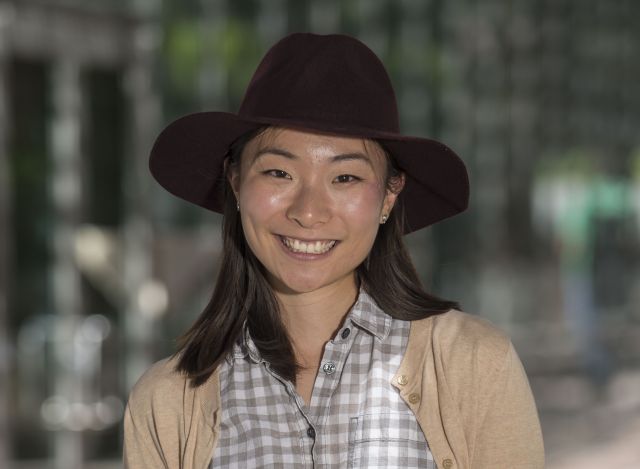
Student Spotlight: Takako Hirokawa
The ECE Current Newsletter (Fall 2019)
Takako and her research
- Why did you choose UCSB’s Electrical Engineering Program? I chose the Electrical Engineering program because it is one of the best in the world for photonics, if not the best. Location may or may not have also been a factor.
- What is campus life like for EE students? I think a lot of time on campus is spent on schoolwork whether you’re an undergraduate student completing assignments or a graduate student doing research. However, there are many student organizations on campus with a range of focuses. These types of extracurriculars are a great way to meet other people who aren’t necessarily in your classes and can enhance your undergraduate or graduate experience.
- Students and parents often ask, what can you do with an electrical engineering degree? An electrical engineering degree is great because it’s the major that teaches you the underpinnings of much of the technology that we use daily. Parents will like hearing that it can serve as direct training for a future (and very likely lucrative) job in a hot job market.
- What prepared you the most for studying engineering in college? A well-respected physics education researcher encourages that if you’re stuck solving a problem ask yourself the following questions to get yourself unstuck: (1) What exactly are you doing? (Can you describe it precisely?) (2) Why are you doing it? (How does what you’re doing fit into the solution?) (3) How does it help you? (What will you do with the outcome when you obtain it?) I’ve found that following this metathinking process is really helpful in clarifying my direction for both homework and research problems.
- What were some challenges you faced as a student/researcher? As a researcher, there’s always some sort of roadblock in your research whether that’s administrative or scientific. Of course, the ones that are more interesting and ultimately more rewarding are the scientific ones. As someone who designs devices to be fabricated by a foundry, it is very frustrating when your devices do not perform as you had designed them to and you don’t know why. However, in digging into these problems, I’ve learned how to be a better photonics device designer.
- Can you tell us of anyone who you looked up to? I don’t think I had anyone I felt I could look up to until after I graduated college. In the two years after college before I started graduate school, I got to know a couple of women professors at my alma mater, University of Colorado Boulder, whom I look up to as examples that you can make it as a woman in a male-dominated field and still be yourself.
- What have you learned that has surprised you the most so far? One surprising thing that I’ve learned so far is that if we could only see infrared colors, silicon would appear clear. This is a fundamental phenomenon in my subfield of silicon photonics, and many engineering fields take advantage of transparency of materials at other wavelengths, but every time I actually think about it, it seems crazy because it definitely isn’t transparent to our eyes!
UCSB Photonics Society
I am also the President of the Photonics Society at UCSB which is a student chapter of the IEEE Photonics Society. We host speakers from the IEEE Photonics Society Distinguished Lecturer series, OSA, SPIE, and local industry professionals.
We are heavily involved in bringing photonics to the local K-12 community. Through the Center for Science and Engineering Partnerships (CSEP) we have had the opportunity to design several self-contained 25-minute activities for middle school science nights, and designed and taught extracurricular high school courses. Every October, female graduate students and local industry professionals organize the annual Women in Photonics Week, an event that includes tours of the UCSB Nanofabrication Facility, the cleanroom at Freedom Photonics, and talks at local K-12 schools.
Each academic year ends with a large event. This year, we held a banquet featuring a keynote speaker from NIST Boulder who spoke about frequency combs, and sponsorship talks from Raytheon and HPE.
The ECE Current - "Student Spotlight: Takako Hirokawa" (page 5)